Samsung’s mid-year Unpacked event just dropped a string of new mobile hardware, fronted by a pair of new foldables in the Z Flip 4 and Z Fold 4, the new Galaxy Buds 2 Pro and a new line of wearables in the Samsung Galaxy Watch 5 and Watch 5 Pro.
While the Watch 5 Pro is a new beast entirely that looks to offer a hardier and more premium experience than anything we’ve seen from Samsung’s wearables to date, the standard Galaxy Watch 5 serves as the more accessible smartwatch for those that didn’t pick up a Galaxy Watch 4 and are still interested in what Samsung has to offer or those looking for the most like-minded Apple Watch alternative on the Android side of the fence.
On the surface, the Watch 5 looks like a predominantly incremental upgrade over its 2021 predecessor; still arriving in two sizes and sporting Samsung’s unique take on the latest version of Wear OS; meaning users can expect a rich wearable user experience that offers a wealth of functionality supported by both Samsung and Google.
Samsung Galaxy Watch 5 price and availability

Samsung unveiled the Watch 5 alongside its Pro-branded sibling as part of its Summer Unpacked event, which took place on August 10.
As with the new Z Fold 4 and Z Flip 4, the Watch 5 line hit pre-order on the same day (or the next day in Australia), with a promised on-sale date of August 26 (September 2 in Australia).
Despite their similarities, pricing has increased across the board, most likely as a result of the supply chain challenges and economic pressures that Samsung, like many other big tech companies, isn’t immune to.
As with last year, the Galaxy Watch 5 arrives in two sizes, each available in both Bluetooth-only and LTE cellular configurations.
Samsung Galaxy Watch 5 (40mm)
- Bluetooth = £269 / $279.99 / AU$499
- Bluetooth / LTE = £319 / $329.99 / AU$599
Samsung Galaxy Watch 5 (44mm)
- Bluetooth = £289 / $TBC / AU$549
- Bluetooth / LTE = £339 / $TBC / AU$649
Samsung Galaxy Watch 5 design and display
The biggest shift for the Galaxy Watch range year-on-year is the absence of a Classic model amidst the 2022 lineup.
The Watch 5 Pro brings a wholly new aesthetic all its own, while the standard Watch 5 continues the distinct, contemporary stylings we were introduced to with last year’s Watch 4, meaning no physical rotating bezel anywhere in this year’s wearable lineup.
As before, the Watch 5 serves up clean lines, with brushed aluminium lugs that extend to wrap around the black polished metal body, while grooved quick-release can be swapped out to suit your style and taste.
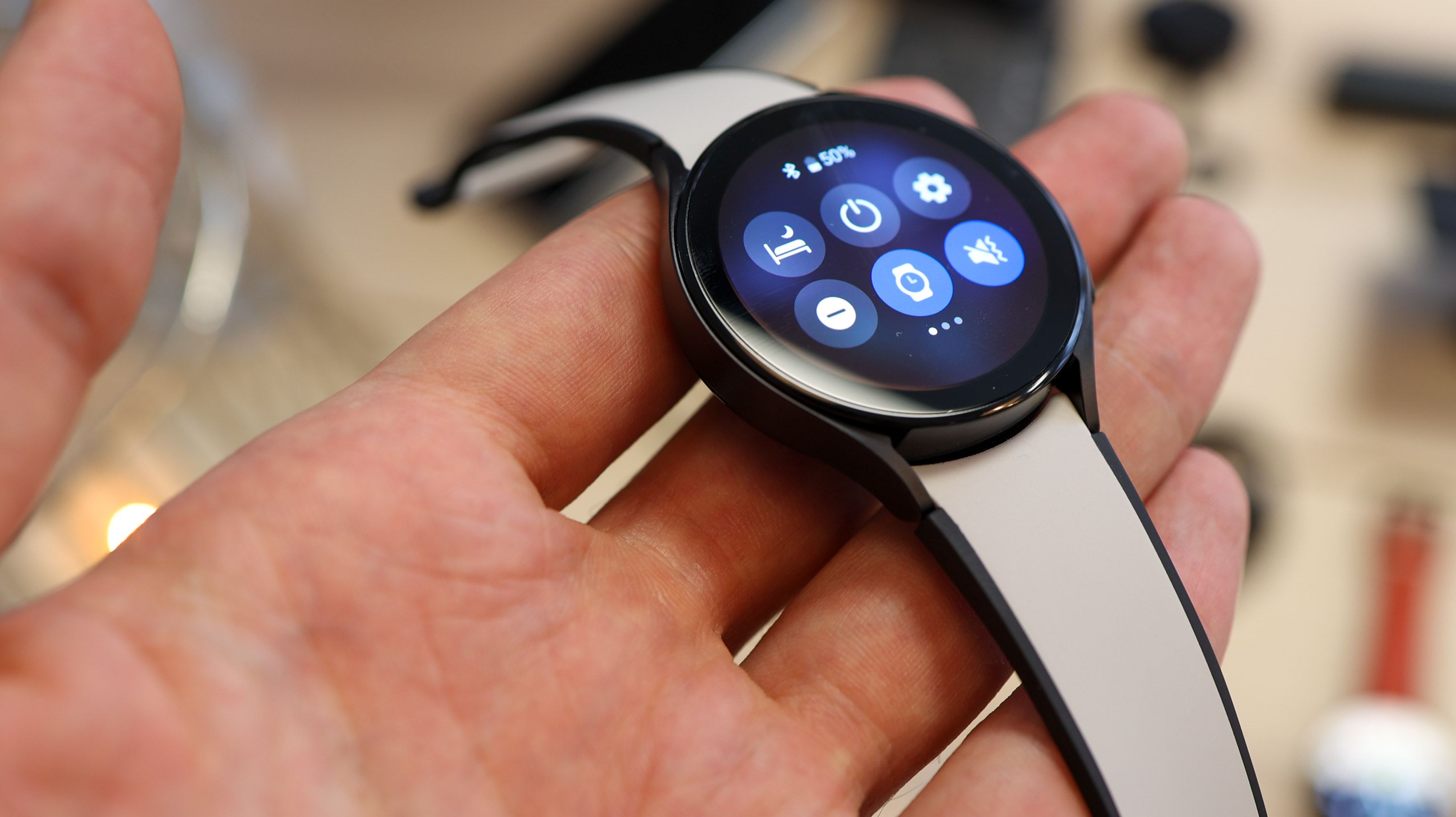
The smaller 40mm model comes in Graphite, silver or Pink Gold, while the larger 44mm version swaps out Pink Gold for Sapphire (a muted mid-tone blue).
Despite offering bigger batteries in this year’s lineup (making both sizes about 3 grams heavier), the dimensions of the Watch 5 haven’t grown at all, compared to the Watch 4; an impressive feat, even if the extra heft might mean they’re more noticeable on the wrist for some users.
As for the display, as with Watch 4, you’ll find either a 1.19-inch (on the 40mm model) or a 1.39-inch (on the 44mm model) circular Super AMOLED display with always-on functionality and 330ppi (making it fractionally sharper than the Apple Watch 7).
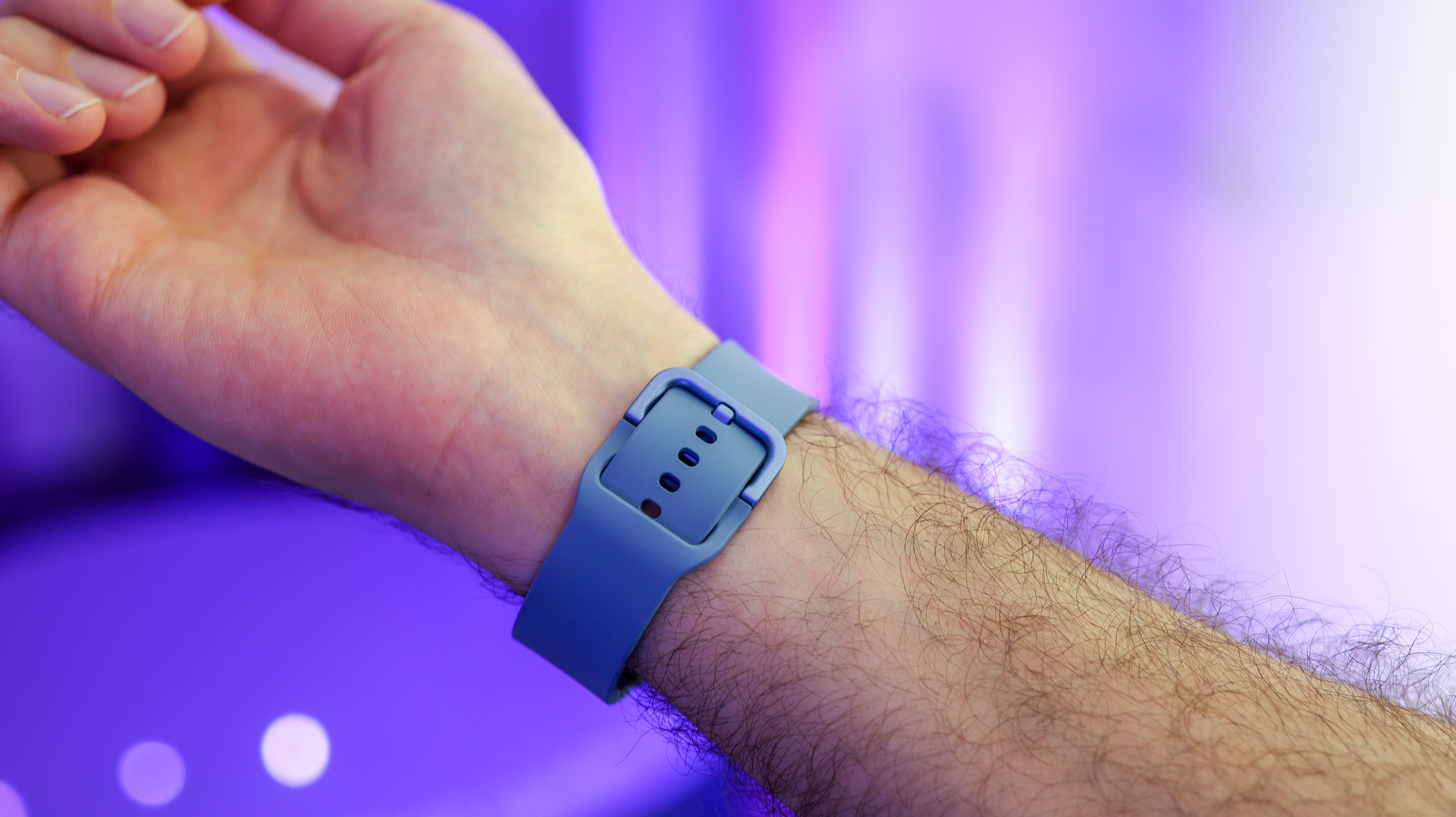
Although resolution remains the same and image quality appears unchanged, the big upgrade here is instead the use of far tougher sapphire crystal; which Samsung claims is 60% stronger than the cover glass found on the Watch 4.
The Watch 5 also benefits from IP68-certified ingress protection against dust and water, swim-proofing up to 5 ATM and MIL-STD-810H approval, meaning it’s tested to withstand extraneous conditions – including hard knocks and drops, temperature extremes and more.
Samsung Galaxy Watch 5 software and fitness
The Samsung Galaxy Watch 4 marked a pivotal shift in the company’s wearable strategy, as it shelved its long-standing Tizen OS user experience as the result of a new partnership with Google; adopting their previously unloved Wear OS platform instead.
While Wear OS 3 is still finding its feet in the wider smartwatch market, the Watch 4 and now Watch 5 are leading the charge, albeit dressing Google’s experience with Samsung-exclusive aesthetics and functionality in One UI Watch.
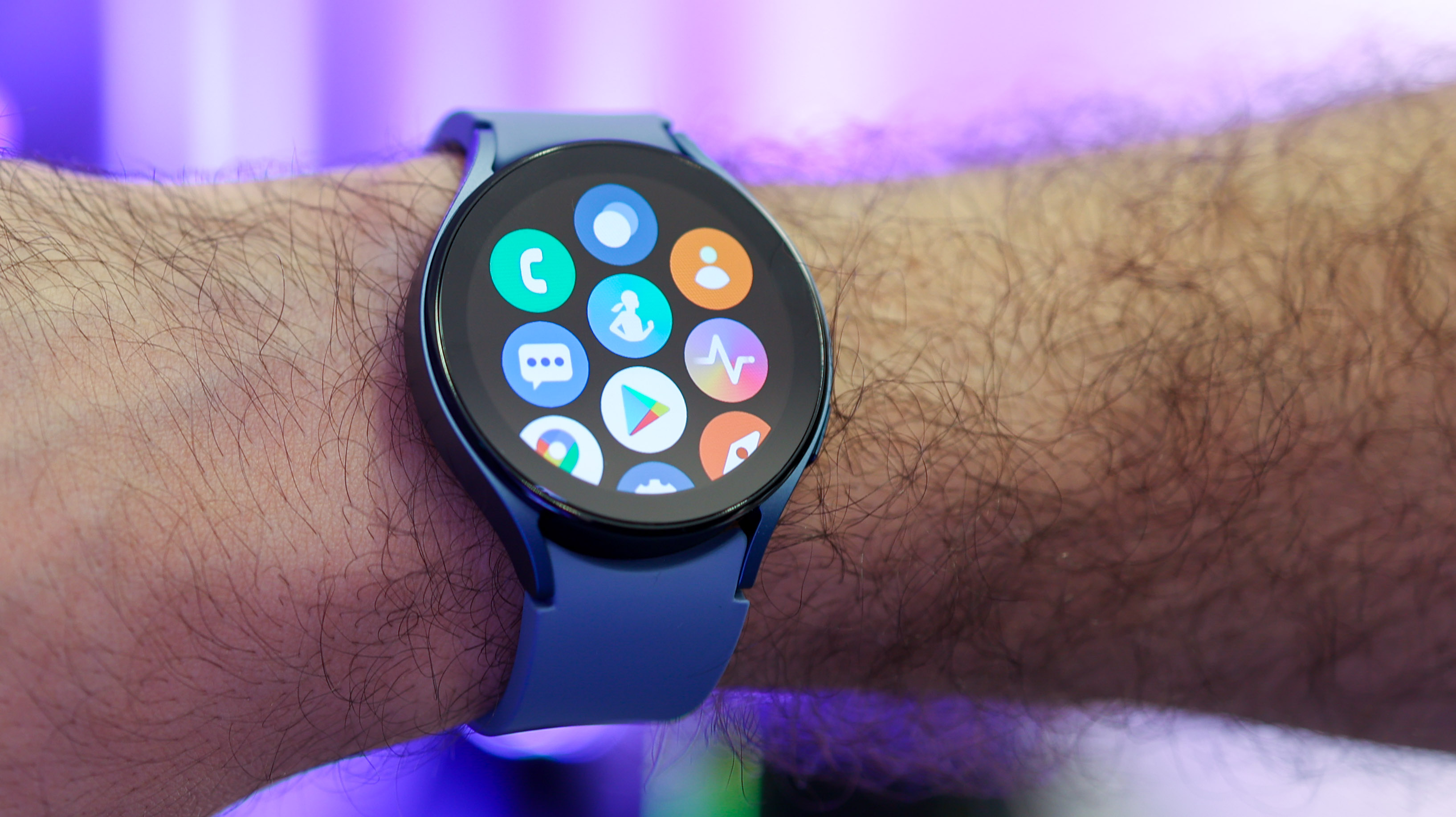
The Watch 5 comes running One UI Watch 4.5 (atop Wear OS 3.5), which was actually introduced back in July, bringing additions like an improved on-wrist typing experience and easier access to your favourite watch faces.
In terms of the software experience as it appears on the Watch 5 specifically, Samsung has focused on expanding the wearable’s wellness skillset, with a particular focus on fleshing out sleep tracking.
This new sleep tracking system includes more in-depth guidance and promises to deliver better insights; going so far as to automatically serve up a month-long sleep plan with the aim of improving overall sleep quality.
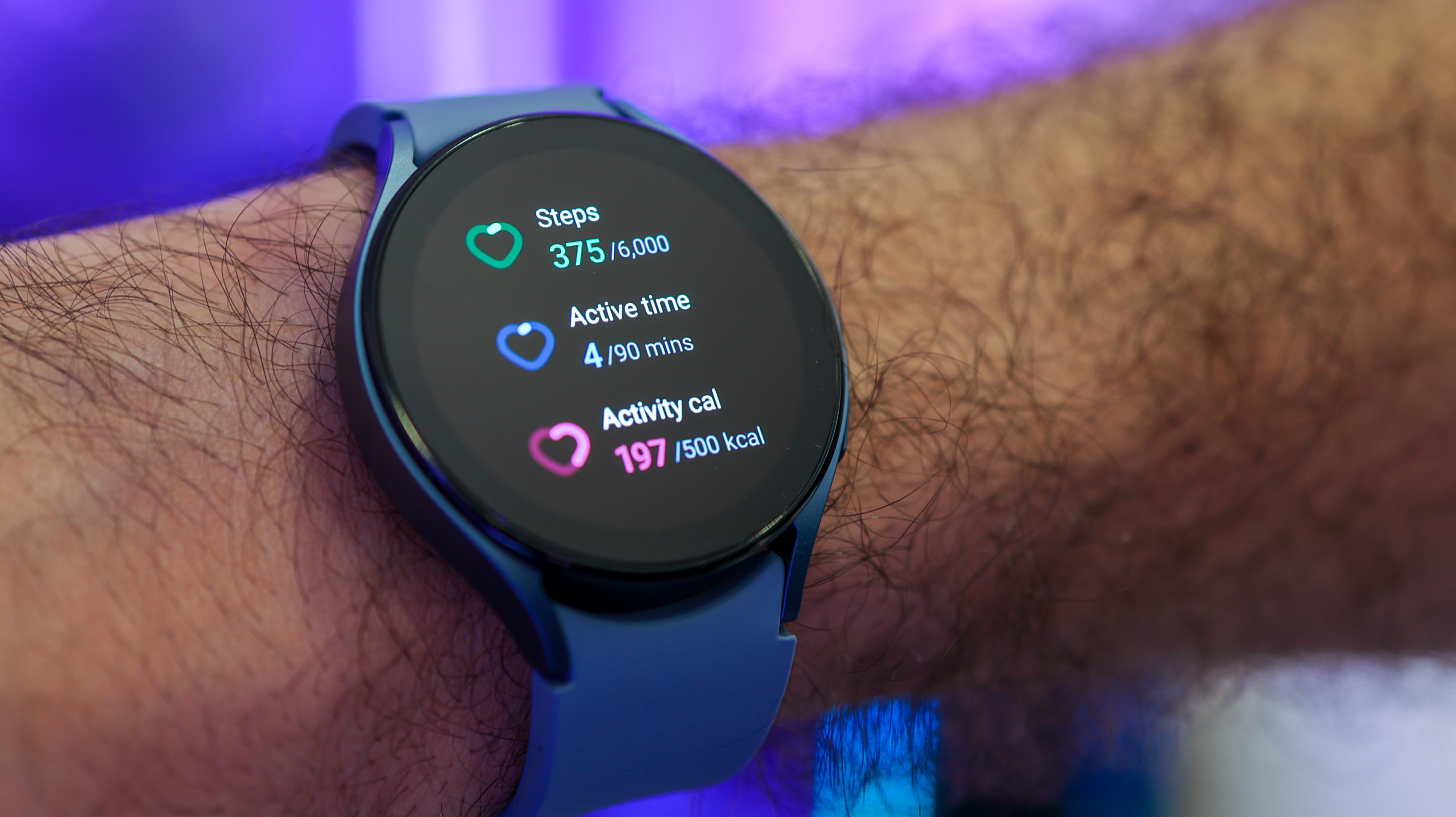
Additional SmartThings integration also pairs your sleep cycle with your connected smart home, meaning lights can be set to dim or switch off and other IoT devices will refrain from making noise when the Watch 5 detects that you’re going to sleep.
Another feature that we first met on the Watch 4 was Samsung’s BioActive Sensor (which is actually an array of multiple sensors), delivering a similar feature-set on the new Watch 5 that includes the aforementioned sleep tracking, as well as heart rate and blood oxygen monitoring, along with ECG and body composition analysis to discern things like water retention and bone density.
Samsung Galaxy Watch 5 performance and battery
While Samsung’s smartwatches are seldom criticised for lacklustre performance, last year’s Watch 4 introduced a notably more powerful chipset in the company’s own 5nm Exynos W920; making an already good-value-smartwatch even better; future-proofing performance and delivering better power efficiency.
The Galaxy Watch 5 runs on the same W920 silicon paired to 1.5GB of RAM and 16GB of storage (for apps and media). Performance is solid, based our initial encounter with the wearable and should serve users well in the long run.
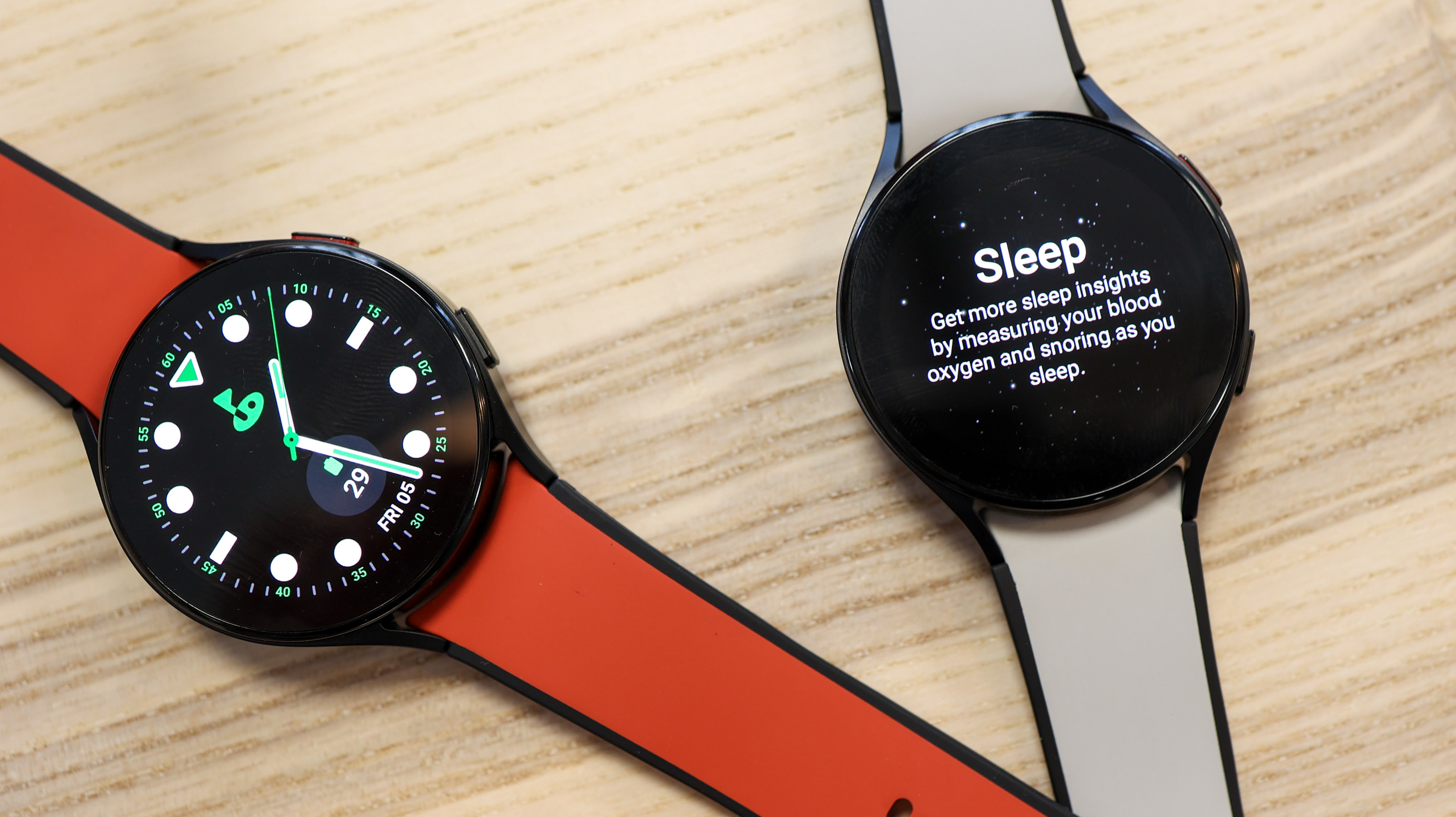
The more capable the smartwatch, the more demanding the experience can be on the battery and with only a small 13% increase in capacity, the Watch 5 should offer better longevity than its predecessor, with the 40mm model moving from 247mAh to 284mAh, while the larger 44mm Watch 5 jumps from 361mAh 410mAh.
What’s more, a new USB-C-ended charger means the Watch 5 also recharges 30% faster too.
Early verdict
Although the jump from the Watch 4 to the Watch 5 doesn’t feel all that significant on the surface, it looks as though Samsung has addressed its predecessor’s biggest pain points in a effort to make a better-rounded and even-more competitive alternative to the likes of the Apple Watch.
Although some of the new functionality will likely trickle down to existing Galaxy Watch 4 users and beyond, Samsung’s decision to tie its latest wearable into smart home automation seems is a seemingly obvious but heavily under-utilised talent within the category, that rivals are yet to capitalize on.
Whether the Galaxy Watch 5 offers more meaningful improvements won’t reveal themselves until we’ve conducted our full review, so stay tuned.




